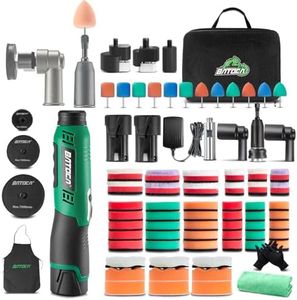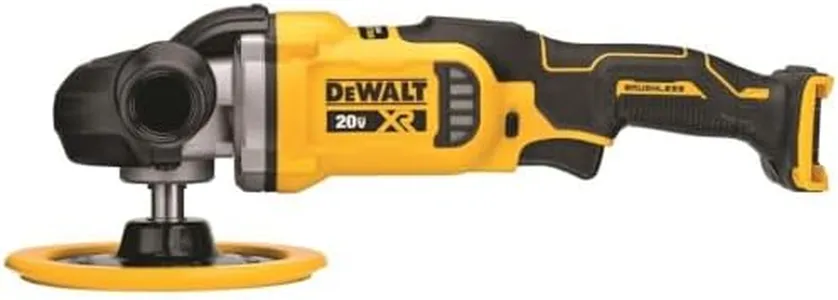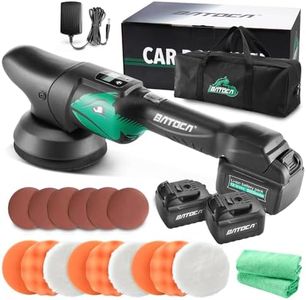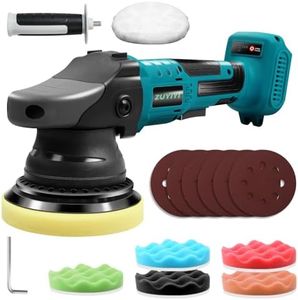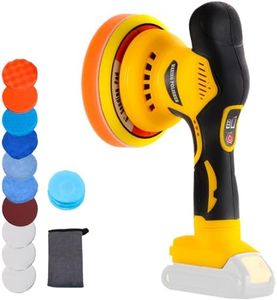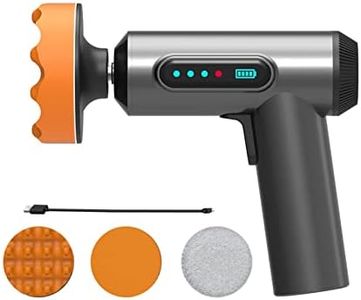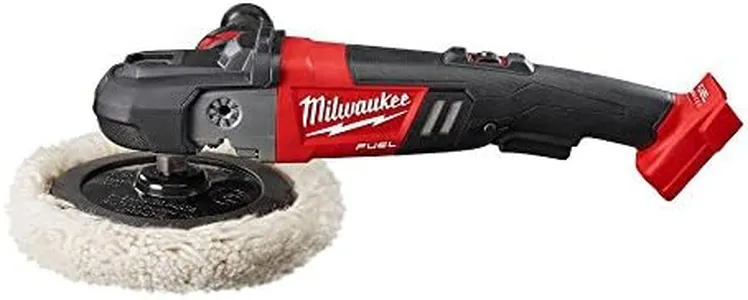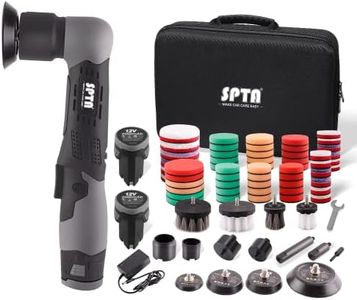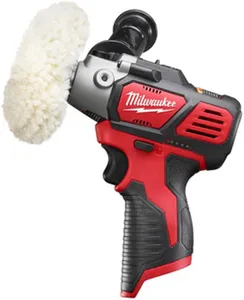We Use CookiesWe use cookies to enhance the security, performance,
functionality and for analytical and promotional activities. By continuing to browse this site you
are agreeing to our privacy policy
10 Best Cordless Car Polishers
From leading brands and best sellers available on the web.Buying Guide for the Best Cordless Car Polishers
Choosing the right cordless car polisher can make your car detailing tasks faster, easier, and more enjoyable. While all cordless polishers help you cut the cord and polish anywhere, their specs vary widely in ways that affect how well they suit different needs. Understanding what each key feature means and how it might impact your experience will help you pick a machine that's enjoyable and effective for your style and situation.Battery VoltageBattery voltage measures how much power the polisher's motor receives. Higher voltage usually means a more powerful and capable machine, but it can also add weight. Cordless polishers normally come in ranges from around 12V up to 20V or more. Lower voltages work well for light touch-ups or very gentle polishing, suitable for owners who do quick jobs or maintain already-polished finishes. Higher voltages are best for tackling larger vehicles, stubborn defects, or if you plan to polish frequently, as they provide more consistent performance. Choose based on the size of your car and how challenging your polishing tasks are.
Battery Capacity (Ah, or amp-hours)Battery capacity, marked as Ah, represents how long the polisher can run on a single charge. A low-capacity battery—like 2.0 Ah—means shorter working times and more frequent recharging, which can be fine for quick jobs or if you only need spot polishing. Larger batteries—around 4.0 Ah or higher—allow for longer operation without swapping batteries, ideal if you're working on an entire car or detailing multiple vehicles at once. Your choice depends on how long your usual polishing session lasts and how convenient you need your workflow to be.
Speed Settings (OPM or RPM)Speed settings, often described in orbits per minute (OPM) or revolutions per minute (RPM), determine how fast the pad spins or moves. Adjustable speed is helpful because different detailing jobs require different speeds—slower speeds for spreading waxes and higher speeds for cutting defects or buffing out scratches. Basic polishers may offer only one or two speed levels, good for beginners doing straightforward work. More advanced models have wide, adjustable ranges, letting you fine-tune speed for every step of the process and are a better fit for enthusiasts or those needing versatility.
Pad SizeThe pad size is the diameter of the polishing surface, typically ranging from 3 to 6 inches. Smaller pads are better for tight areas, curves, and detail work, making them well suited for motorcycles, trim, or intricate parts of a car. Larger pads cover more surface area and make it quicker to polish big panels like hoods and doors, great for full-size vehicles or trucks. Consider your car’s size and the kind of panels you’ll be working on most often to decide which pad size will serve you best.
Weight and ErgonomicsThe weight and shape of a cordless polisher affect how comfortable it is to use for longer periods. Heavier models can tire your arms more quickly but may be more stable and powerful, while lighter models are easier to handle for beginners or for doing detail work. The grip, balance, and trigger placement also matter—look for features that suit the size of your hands and your preferred working style. Always pick a model that feels comfortable to hold and maneuver, keeping in mind how long you plan to use it at one time.
Orbit Type (Rotary vs. Dual Action/Random Orbital)Polishers come in two main mechanical types: rotary and dual action (also called random orbital). Rotary polishers spin in a circular motion and can quickly correct paint but require more skill and can damage paint if misused. Dual action polishers move both in a circular orbit and a spinning motion, making them gentler on your car’s paint and far more beginner-friendly. If you’re new to polishing or want to avoid the risk of damaging your finish, a dual action (random orbital) polisher is generally a safer and easier choice.
